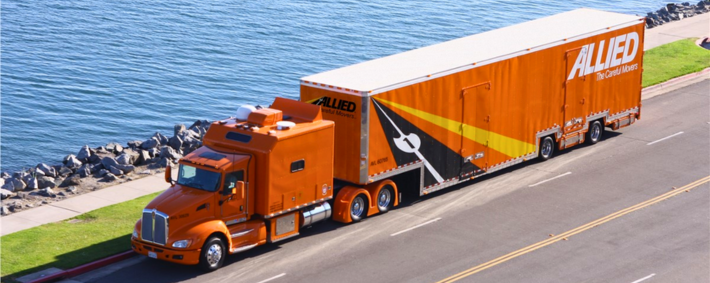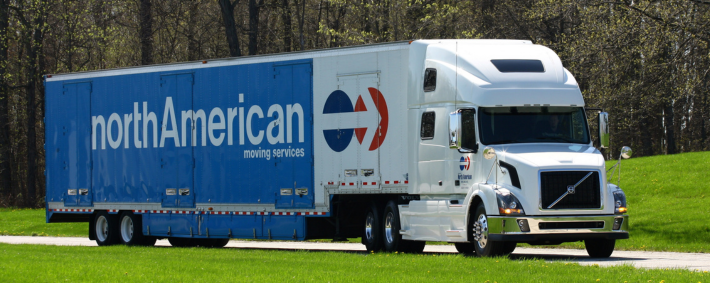All states
USDOT Number
The USDOT number, issued by the FMCSA, acts like a unique identifier for a moving company’s vehicle safety data. This number is crucial because it helps check if the company follows the rules of the road for both commercial and private vehicles. It’s used to monitor how well they stick to these rules by doing audits, investigating crashes, and carrying out inspections.
This number is mandatory for any moving company operating on public roads, whether they’re transporting goods within a state or across state lines.
Each commercial vehicle needs to first be registered before getting its own USDOT number. While some companies opt to consolidate their fleet under a single USDOT number, others may have multiple numbers for individual vehicles.
MC Number
An MC Number, or ‘motor carrier’ identifier, is an identification issued by the FMCSA. Alongside the mandatory USDOT number, the MC Number is essential for moving companies engaged in interstate commerce, especially when transporting federally regulated commodities.
MX Number
An MX number is a registration ID for motor carriers owned or controlled by a Mexican citizen or someone based in Mexico, or for motor carriers operating between the U.S. and Mexico. The Federal Motor Carrier Safety Administration (FMCSA) issues MX numbers to ensure movers adhere to regulations and maintain safety standards during transportation.
BIPD coverage
Bodily Injury and Property Damage (BIPD) coverage is an indispensable requirement for moving companies. It’s a legal imperative, ensuring movers can bear financial responsibility in incidents involving injury or property damage.
This insurance encompasses medical expenses and property damage for all affected parties, including bystanders and their belongings. Across states, there’s a usual minimum mandate of $750,000 for BIPD coverage for moving businesses.
California:
MTR Number
The MTR Number, also known as CAL-T Number or CPUC Permit Number, serves as a distinct identifier for property motor carriers. For intrastate carriers in California handling household goods and passengers, an active CPUC permit issued by the California Public Utilities Commission (PUC) is mandatory.
This designation needs to be visibly displayed on the power unit and incurs a one-time fee. Additionally, carriers must annually submit an equipment list and proof of insurance to maintain compliance.
Ohio
PUCO Number
Moving companies operating in Ohio must obtain a PUCO number to conduct intrastate business and comply with intrastate operating authority regulations.
Movers registered with PUCO undergo checks to ensure they have liability insurance, properly registered vehicles with the Ohio Bureau of Motor Vehicles, and possess relevant licenses, such as a weight distance tax permit.
Florida
FDACS Number
In Florida, Chapter 507 of the Florida Statutes mandates that any business involved in intrastate moving of goods must register with the Florida Department of Agriculture and Consumer Services (FDACS).
Registration is compulsory for intrastate movers in addition to any local licenses, but it does not replace them. Intrastate movers and brokers need to renew their registration every two years.
PBCCA (Palm Beach County Consumer Affairs) Number
Palm Beach County mandates that all local household moving companies obtain a license, or “business permit,” from the Consumer Affairs Division. Their license means that they meet the minimum requirements of the Palm Beach County Moving Ordinance.
Massachusetts
MDPU Number
A moving company that intends to move household items within Massachusetts must first obtain operating authority from the Department of Public Utilities (DPU). Once approved, they receive an operating number known among movers as MDPU.
Every year, these moving companies are required to send the DPU updated insurance documents when they renew their license. They also need to update their pricing details by filing a new tariff whenever they change their rates or fees.

















Our diligent methodology is simple, but efficient. Each Waldo Verified company went through a vigorous onboarding process. Our booking agents met with their moving coordinators to perfectly understand the services offered, their detailed pricing and most importantly, their professionalism.